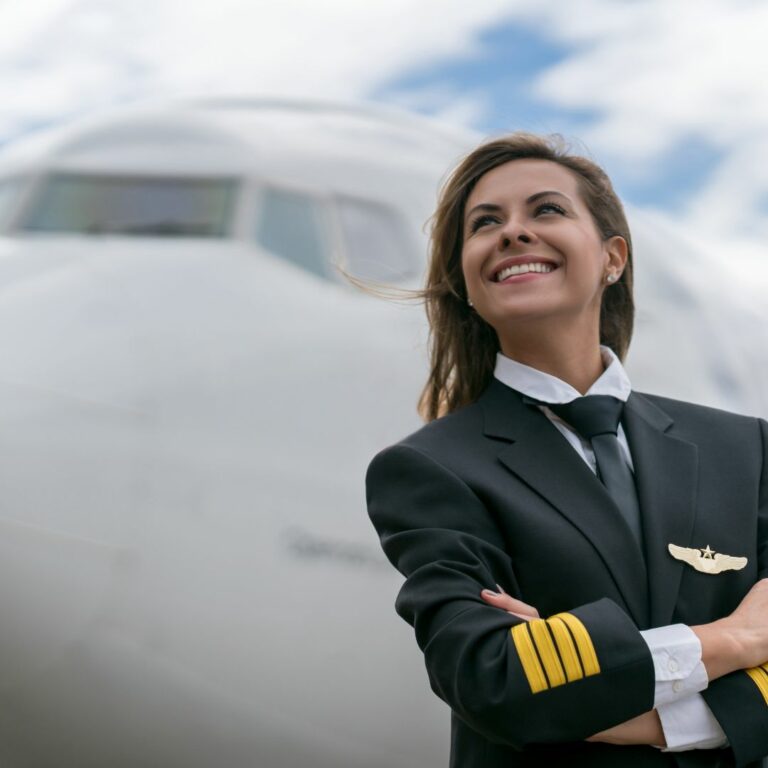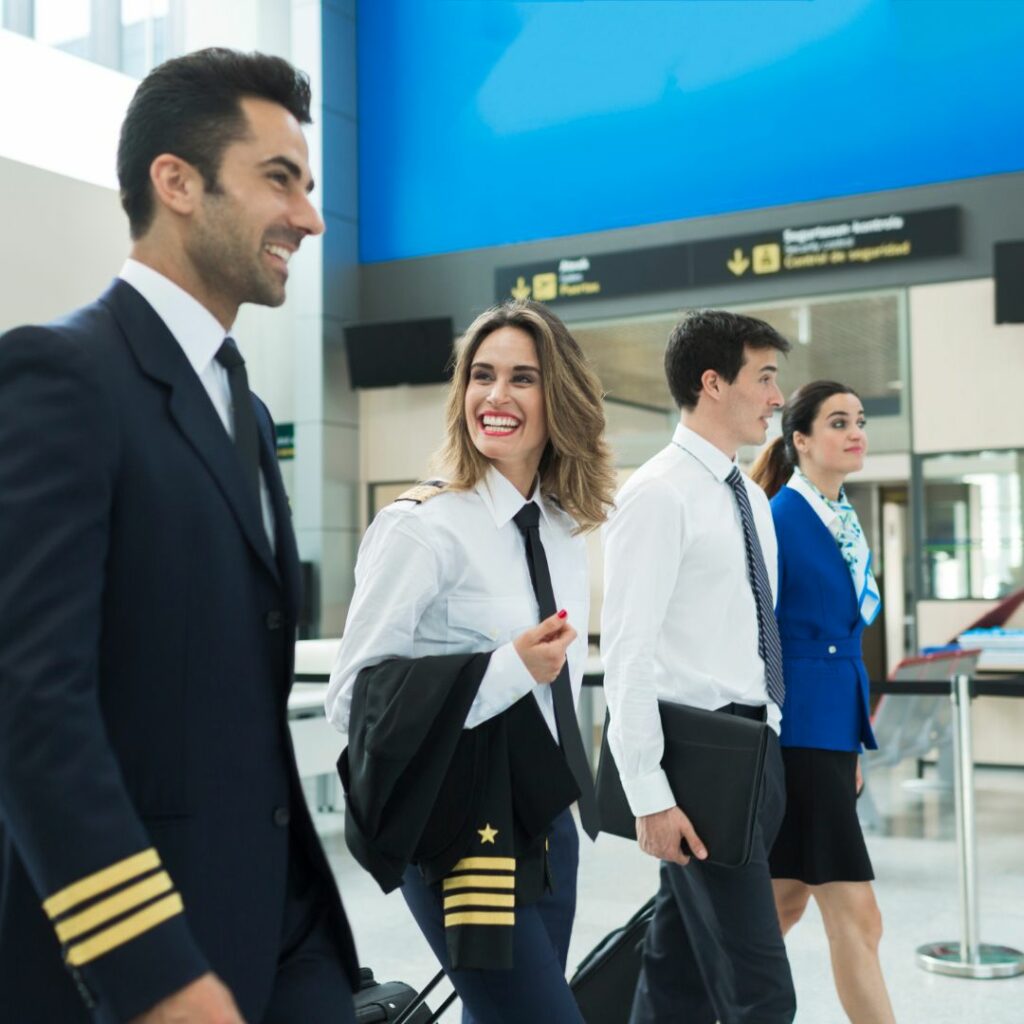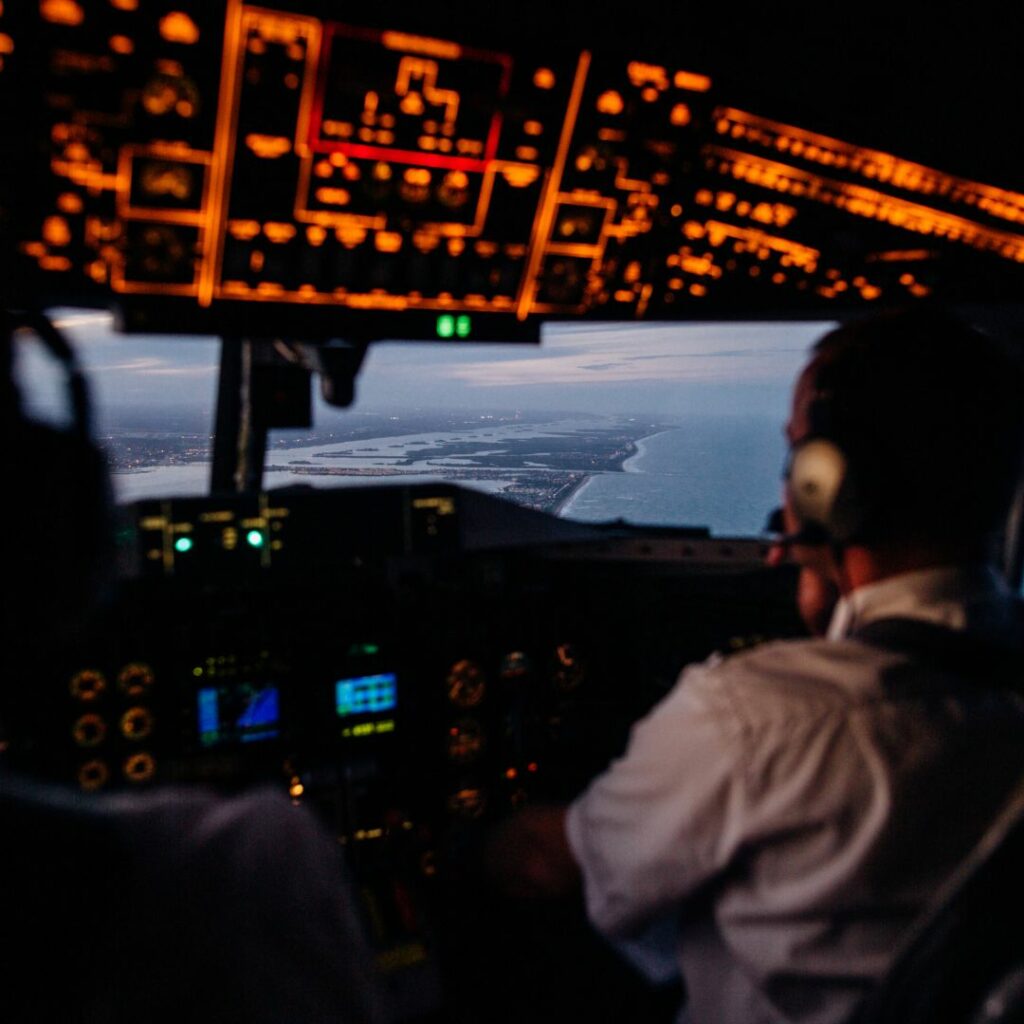Pilot Training
Embarking on the Journey of Pilot Training with Captain Joe
The sky has always been a symbol of limitless possibilities. It’s where dreams take flight, and where ordinary people can become extraordinary pilots. If you’ve ever gazed at the sky and felt the calling to soar above the clouds, then pilot training is your gateway to that dream. With Captain Joe’s video pilot training course, you’re not just learning to fly; you’re embarking on a journey towards mastery, freedom, and success.
Three Pathways to the Sky
At Captain Joe’s Flight Academy, we understand that every aspiring pilot has unique needs and goals. That’s why we offer three distinct pathways to help you achieve your pilot dreams:
- Accelerated Airline Pilot Track: For those who want to fast-track their career, this program allows you to qualify as a First Officer in just 12 months.
- International Program: Designed for international students, this full-time course will have you airline-ready in as little as 15 months.
- Private Pilot License: If flying is your passion or hobby, this program is the perfect starting point for a career in the skies or simply enjoying the freedom of flight.
Your Steps to Becoming a Pilot
Embarking on pilot training is like building a bridge to the sky. Here’s how Captain Joe guides you through the process:
- Research Pilot Schools and Programs: Captain Joe’s Flight Academy offers the latest training technologies and a friendly, approachable video course. Our reputation in the industry is unmatched.
- Check Entry Requirements: Age, medical conditions, and educational qualifications are key factors. Captain Joe’s team will guide you through the requirements.
- Earn Your Private Pilot Certificate: Learn basic flight methods, navigation, and emergency training with Captain Joe’s hands-on approach.
- Earn an Instrument Rating Certificate: Build confidence in flying under different conditions.
- Earn a Commercial Pilot Single-Engine Certificate: Ground school and flight training cover essential FAA regulations.
- Earn a Commercial Multi-Engine Add-on Rating: Essential for airline flying, offered FREE to all AAPT graduates.
- Obtain Your Certified Flight Instructor Certificate: Teaching others is a great way to embed learning and build flight hours.
- Gain Flight Experience and Earn an ATP Certificate: Unlock your potential to fly for regional and major airlines.
- Become a Commercial Airline Pilot: Congratulations! You are now eligible to fly for an airline.


Building Your Career with Captain Joe
The journey doesn’t end with obtaining your license. Captain Joe’s Flight Academy offers continuous support and opportunities to build your career. Here’s how we help you soar:
- Interview Opportunities: Direct interviews with airlines across the country.
- Certified Flight Instructor Positions: Teach others and build valuable flight hours.
- Networking Events: Regular events to meet the team and network with industry professionals.
- Career Guidance: Personalized career counseling and support to help you reach your goals.
Your Investment in the Future
Investing in pilot training is an investment in your future. At Captain Joe’s Flight Academy, we understand the financial commitment and offer various support options:
- Flight School Loans: Flexible loan options to suit your needs.
- Aviation Scholarships: Various scholarships to support your dream.
- Transparent Pricing: Clear and upfront pricing for all programs and courses.
Captain Joe’s pilot training is more than a course; it’s a partnership in your success. With our comprehensive approach, cutting-edge technology, and unwavering support, your dream of flying is within reach. Join us, and let’s make the sky your new home.
The Fleet: Your Wings to Success
Captain Joe’s Flight Academy boasts an impressive fleet of aircraft, each designed to offer a unique training experience. Here’s a snapshot:
| Aircraft Type | Features | Best For |
|---|---|---|
| Single-Engine | Perfect for beginners | Basic flight training |
| Multi-Engine | Advanced navigation systems | Commercial pilot training |
| Simulators | Realistic flight scenarios | Skill refinement and testing |
The Technology Behind Captain Joe’s Flight Training
Embracing the latest technology is at the heart of Captain Joe’s Flight Academy. Our cutting-edge tools and simulators provide an unparalleled training experience:
- Advanced Flight Simulators: Offering real-world scenarios to practice various flight conditions.
- Digital Classrooms: Interactive lessons and digital resources for comprehensive learning.
- Online Learning Platform: Access courses, materials, and support from anywhere in the world.
- Aircraft Maintenance Technology: Ensuring the highest standards of safety and performance.
The Path to Success: Captain Joe’s Training Timeline
Understanding the journey to becoming a pilot can be complex. Here’s a simplified timeline of the training process at Captain Joe’s Flight Academy:
- Initial Consultation: Determine the right program for you.
- Enrollment and Orientation: Join the Captain Joe family.
- Ground School: Learn the theoretical aspects of flying.
- Flight Simulations: Practice in state-of-the-art simulators.
- In-Flight Training: Real-world flying experience.
- Examinations and Certifications: Prove your skills and knowledge.
- Career Placement Support: Guidance to land your dream job.
Pilot Training
Becoming a pilot is a dream that captures the imagination of many. The allure of the open sky, the freedom to soar above the clouds, and the thrill of navigating an aircraft are experiences that are unparalleled. But how does one embark on this exciting journey?
Your path for your pilot training
The path for your pilot training with a clear understanding of your aviation goals. Are you interested in flying recreationally, or do you aspire to become a commercial airline pilot? The answer to this question will guide your choices in education, training, and certification.
Selecting the right flight school is a critical step in your aviation journey. Research various schools, considering factors such as the experience of instructors, the quality of equipment, and the school’s reputation in the industry. If possible, visit the schools, meet the instructors, and talk to current students to get a feel for the environment.
Before you begin your training, you’ll need to meet certain basic requirements. These may include age restrictions and a medical examination to ensure you meet the necessary health and fitness standards.
Building experience is crucial. Log the required flight hours, and consider pursuing additional ratings to enhance your skills. Specialized ratings, such as instrument or multi-engine, can open up new opportunities and challenges.
Financial planning is crucial
Financial planning is an important consideration, as flight training can be a significant investment. Explore options such as scholarships, loans, and other financial aid to support your dream.
The path to becoming a pilot is both rewarding and demanding. It requires careful planning, hard work, dedication, and a passion for flying. But the rewards are immense. Whether you choose to fly for personal enjoyment or embark on a professional career in aviation, the sky is a canvas waiting for you to paint your journey.
Remember, becoming a pilot is not just about learning to control an aircraft; it’s about understanding the sky, respecting the environment, and embracing a lifelong journey of learning and growth. With the right approach, guidance, and determination, your dream of flying can become a thrilling reality.


Finding Your Path: Identifying Your Aviation Goals
The first step in becoming a pilot is to identify your aviation goals. Are you drawn to the thrill of recreational flying, or do you have ambitions to become a commercial airline pilot? Understanding your ultimate goal will guide your choices in education, training, and certification.
Choosing the Right Flight School: A Critical Decision
Selecting the right flight school is a decision that will shape your entire aviation journey. Research various schools, considering factors such as the experience of instructors, the quality of equipment, and the school’s reputation. Visiting schools and talking to current students can provide valuable insights.
Meeting the Requirements: Age and Health Considerations
Before embarking on your training, you’ll need to meet certain basic requirements. Age restrictions and a medical examination are standard prerequisites, ensuring that you meet the necessary health and fitness standards for flying.
Ground School and Flight Training: Building Skills and Knowledge
Your pilot training will consist of two main components: ground school and flight training. Ground school covers the theoretical aspects of flying, while flight training provides hands-on experience. Both are essential in shaping you into a skilled and confident pilot.
Examinations and Certifications: Proving Your Abilities
Passing written exams and practical flight tests are essential milestones on your path to becoming a pilot. These examinations are designed to assess your knowledge, skills, and readiness to take command of an aircraft.
Building Experience: Logging Hours and Pursuing Ratings
Experience is key in aviation. Logging the required flight hours and pursuing additional ratings such as instrument or multi-engine can enhance your skills and open up new opportunities.
The Importance of Mentorship: Learning from Experienced Pilots
Mentorship plays a vital role in the development of a new pilot. Connecting with experienced pilots who can share insights, wisdom, and practical advice can significantly enhance your learning experience. Mentors can provide guidance on career decisions, offer support during challenging phases of training, and share real-world experiences that textbooks can’t capture. Building relationships with mentors, whether through formal mentorship programs or informal networking, can be a valuable asset in your aviation journey.
The Role of Simulators: Virtual Training Environments
Flight simulators have become an integral part of modern pilot training. These virtual environments allow you to practice maneuvers, respond to simulated emergencies, and gain experience in various weather conditions without leaving the ground. Simulators offer a safe space to make mistakes and learn from them, providing an opportunity to refine skills before applying them in real flight. The use of simulators in training not only enhances safety but also allows for more cost-effective and environmentally friendly training.
Ethics and Professionalism: The Pilot’s Code
Becoming a pilot is not just about mastering technical skills; it’s also about embracing a code of ethics and professionalism. Pilots are entrusted with the lives of passengers and crew, the safety of the aircraft, and the well-being of the environment. This responsibility requires a commitment to integrity, honesty, accountability, and continuous improvement. Understanding and living by these principles is essential to earning the trust and respect of colleagues, employers, and the public.
The Global Perspective: Understanding International Aviation
In today’s interconnected world, understanding international aviation regulations, cultures, and practices is essential for aspiring pilots. Whether you plan to fly internationally or simply want to understand the global context of aviation, knowledge of international standards, agreements, and cultural nuances is valuable. This global perspective enhances your ability to operate in diverse environments and prepares you for opportunities in international aviation.
Balancing Work and Life: The Pilot’s Lifestyle
The lifestyle of a pilot can be both exciting and demanding. Irregular hours, time away from home, and the need to adapt to different time zones and cultures are common aspects of a pilot’s life. Balancing work commitments with personal life, family, and self-care is an ongoing challenge. Understanding and preparing for this unique lifestyle is essential to finding fulfillment and success in your aviation career.
Continuous Learning: Staying Ahead in a Dynamic Field
Aviation is a rapidly evolving field, with continuous advancements in technology, regulations, and best practices. A commitment to lifelong learning is essential to stay ahead of these changes. This may include ongoing training, attending industry conferences, engaging with professional organizations, and staying informed about the latest research and innovations. Embracing continuous learning ensures that you remain competent, competitive, and aligned with the highest standards of the profession.
The Psychological Aspect: Mental Fitness for Pilots
Flying an aircraft requires not only physical fitness but also mental agility and emotional stability. Pilots must be able to make quick decisions under pressure, handle stress effectively, and maintain focus over long periods. Psychological assessments and ongoing mental health support are essential components of a pilot’s training and career. Developing coping strategies, understanding personal triggers, and recognizing when to seek professional help are vital skills for a successful pilot.
Community Involvement: Pilots Giving Back
Many pilots find fulfillment in using their skills to give back to the community. Whether it’s participating in humanitarian missions, volunteering for medical transport, or engaging in educational outreach, pilots have unique opportunities to make a positive impact. These experiences not only enrich the lives of others but also add depth and meaning to a pilot’s personal and professional journey.
Environmental Stewardship: The Green Pilot
With growing awareness of environmental issues, pilots and the aviation industry are taking steps towards sustainability. Understanding and implementing eco-friendly flying practices, supporting initiatives to reduce emissions, and advocating for responsible aviation policies are ways pilots can contribute to environmental stewardship. This commitment to the environment reflects a broader sense of responsibility and aligns with global efforts to create a sustainable future.
Technology and Innovation: The Future of Flying
The field of aviation is at the forefront of technological innovation. From advanced navigation systems to electric aircraft, the future of flying is exciting and ever-changing. Aspiring pilots must be prepared to engage with new technologies, adapt to evolving methodologies, and contribute to the innovation that drives the industry forward. Staying informed about technological trends and actively participating in ongoing training ensures that pilots remain relevant and ready for the future.
Networking and Collaboration: Building Professional Relationships
Building professional relationships is an essential aspect of a pilot’s career. Networking with fellow pilots, industry professionals, regulators, and educators opens doors to opportunities, collaborations, and growth. Attending industry events, joining professional organizations, and actively engaging with the aviation community fosters a sense of belonging and provides support throughout various stages of a pilot’s career.
Cultural Competency: Flying Across Cultures
In an increasingly globalized world, pilots often find themselves interacting with diverse cultures. Cultural competency – the ability to understand, communicate with, and effectively interact with people across cultures – is a valuable skill. Whether dealing with international passengers, working with multicultural crews, or navigating regulations in different countries, cultural awareness and sensitivity enhance a pilot’s ability to succeed in a global environment.
Frequently asked Questions
To become a pilot, you need to start with obtaining a private pilot license (PPL) which requires a minimum of 40 flight hours in the U.S. (or 45 hours in the EU). You need to pass a written exam and a flight test. Medical fitness is also a requirement.
After obtaining a private pilot license, you can proceed to get a commercial pilot license (CPL). This requires a minimum of 250 flight hours (in the U.S.) and passing written and flight exams. You also need to be at least 18 years old and have a second-class medical certificate.
The time it takes to become a pilot can vary greatly, depending on how frequently you fly. On average, obtaining a private pilot license can take 3-12 months. A commercial pilot license can take an additional 1-2 years.
The cost of becoming a pilot can vary greatly depending on the country, flight school, and frequency of lessons. On average, it can cost between $5,000 to $15,000 to obtain a private pilot license, and an additional $30,000 to $60,000 for a commercial pilot license.
To become a fighter pilot, you need to join the Air Force, Navy, or Marine Corps. After basic training, you will need to complete officer training school and then undergo specialized Undergraduate Pilot Training. Selection is highly competitive and requires excellent physical and mental health.
To become a helicopter pilot, you need to obtain a helicopter private pilot license, which requires a minimum of 40 flight hours in the U.S. (or 45 hours in the EU), passing written and flight exams, and meeting medical fitness requirements. For commercial operations, a commercial pilot license is required, which requires additional flight hours and exams.
